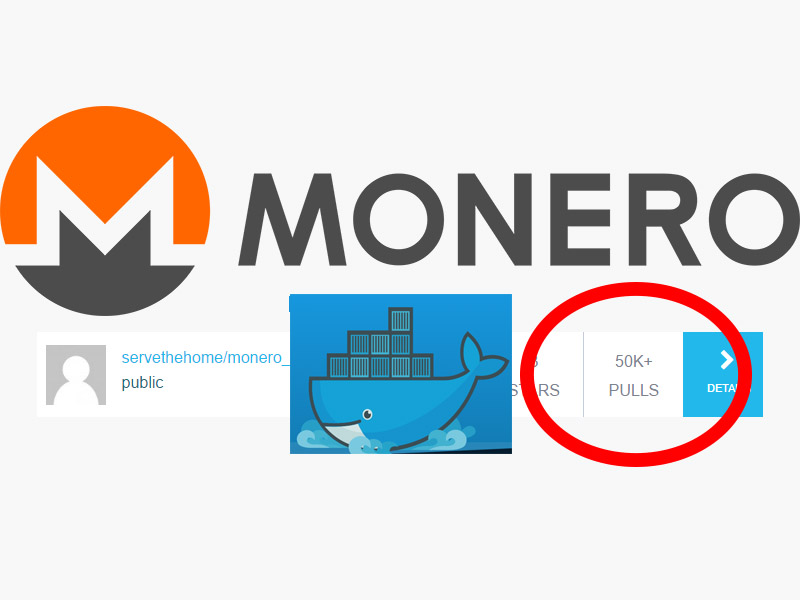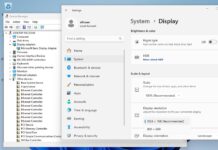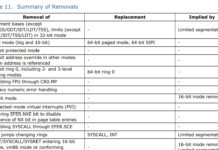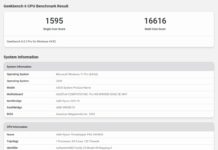There is a major buzz in the community with the coming Monero hardfork. With ASIC miners being released, the Monero project, and several smaller projects are planning to change their proof of work (POW) algorithms in April 2018. The Monero hardfork is set for April 6, 2018 so it is coming quickly. Recently we reported the Aeon and Monero mining images were updated to xmrig 2.5.1. Although it worked on dozens of test miners, there was a reconnect issue forcing an upgrade to 2.5.2. Today, the supported images were upgraded to xmrig 2.5.2.
Monero Mining in Docker
We have been supporting Monero mining in Docker containers since 2016. Since we started releasing our containers, they have been downloaded over 750,000 times according to Docker hub. During this time, we have made a number of improvements to our mining images. The new hard fork created an opportunity to roll out some changes. A few of these are:
- Update to Xmrig 2.5.2 to support the hard fork
- Update to Ubuntu 18.04 as the base platform
- Update gcc versions for compiling xmrig to 7.2 to align with 18.04
- Streamline number of supported images
Once Monero or Cryptonight ASICs hit the market, the Monero team announced that their plan is to regularly change POW algorithms. The thought behind this is that updating the algorithms will slow ASIC deployments. Indeed, some have speculated that the massive jump in Monero and other cryptonight along with Aeon and cryptonight-lite mining difficulty has largely been due to ASICs mining for manufacturers. By continually changing the algorithms, the team is trying to make it too hard for ASIC developers to continually build new hardare.
Updating Your Aeon and Monero Mining Containers
Going forward, there is a universal cryptonight and crytponight-lite mining container that can be used from single socket servers up to 8 socket (and potentially more) servers. The newer image can also use virtually any pool and mine a myriad of different types of cryptonight currencies such as Electroneum. The new universal image can also mine Aeon for cryptonight-light mining. Frankly, there is little reason to use other pools.
A few months ago we released a newer generation servetheheme/universal_cryptonight image that does everything in one go and is easy to automate using the command line or your favorite orchestration manager. Check the instructions here including a nice little launch script.
We are setting the cutoff at the three mining images that currently have over 100,000 pulls on Docker hub, plus the newer universal image. We need to get image sprawl under control to maintain these going forward, and there is no longer a need for this many images with the new universal image.
Using the Updated Docker Containers
If you are already using one of our containers, e.g. servethehome/universal_cryptonight, you can update to the newest miner by:
- Stopping the container (docker stop <container id>)
- Removing the older image (docker rmi servethehome/universal_cryptonight:latest)
- Pulling the newer image (docker pull servethehome/universal_cryptonight:latest)
- Restart containers
If you get an error on #2 you may need to remove the container first using the older image. That depends on how you launched the containers in the first instance. Step 3 keeps it clean, but once you remove the old image, the newer image will automatically download via docker.
Final Words
The fact that this needed to be updated a week after our previous release shows why we are trying to streamline down to a single image in the future. Get on the servethehome/universal_cryptonight:latest container as you update all of your miners for the hard fork that is coming next week.





Patrick, have you looked at the potential boost from using Intel integrated graphics, like the models the in E3-1200 v6 series that have P630 iGPUs? The way to use them would presumably involved OpenCL, and Intel has been very good at supported the latest or near-latest release of OpenCL in its Skylake and later parts.
Granted, these are not powerful GPUs by our normal reckoning, but still, I wonder if there’s some significant untapped computational capacity there. Do Monero and Aeon have OpenCL miners that you could integrate into your containers?
I think the E3-1200 v5 series has some models with the P580 Iris iGPU, which has 128 MiB of graphics RAM or L4 or whatever. That GPU will be a lot more powerful than the 630 on the v6es, so maybe the v5 series is where it’s at for any OpenCL boosts. I think Intel supports OpenCL 2.1 at this point. They have an SDK for it here: https://software.intel.com/en-us/intel-opencl